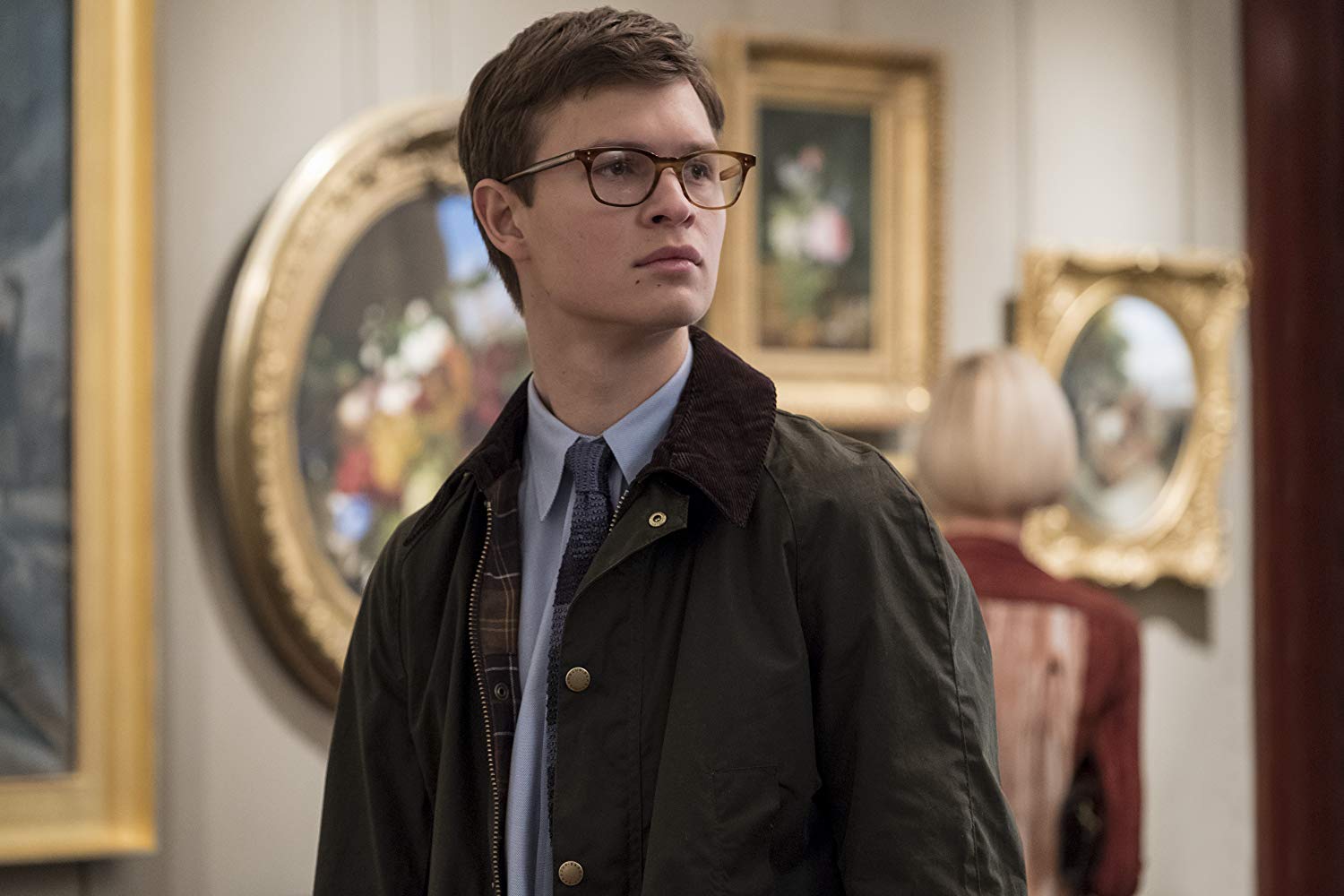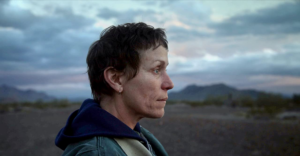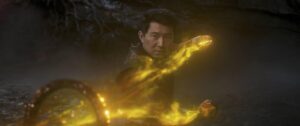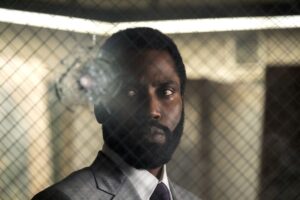In a rustic West Village workshop, two ostensibly twin claw-foot chairs are set in front of a young Theodore Decker (Oakes Fegley): one an authentic piece of period furniture, the other a reproduction of the antique. The difference between them is tactile—as Theo runs his fingertips over the dark mahogany grain, he finds the reproduction to be artificially smooth, cut by a machine. The wood of the original is worn unevenly, the impressions of centuries of human touch.
The Goldfinch is two steps removed from the eponymous Fabritius painting Donna Tartt named her 2013 novel after—an adaptation of an adaptation. Echoing the tumultuous history of the artwork, which survived a seventeenth-century gunpowder explosion in the Dutch town of Delft, thirteen-year-old Theo loses his mother in a domestic terrorist attack on the Metropolitan Museum of Art, narrowly escaping with his life—and, as fate would have it, the painting.
There are bound to be cuts made in the process of converting a nearly 800-page book into a 149-minute film, a hitch that The Goldfinch decides to overcome by rocketing through every minute subplot at a scorching pace. It’s fiercely loyal to the novel on a strictly surface level, exhaustively stuffing details into the frame with the hopes of capturing some of the greatness of Tartt’s novel on the big screen. Theo’s mother’s emerald earrings and the antique dealer Hobie’s (Jeffrey Wright) Noah’s ark with paired wooden animals are notably both present but rendered irrelevant to the story.
What is utterly confounding is how it differs from the book, shuffling the narrative chronology around into something incomprehensible. Stilted dialogue is inserted to explain away questions the viewer may have—questions that would have been visually explained had the movie unfolded in a logical sequence of events. Scenes where nothing and everything seem to happen simultaneously are stitched together with a complete disregard for pacing and progression, resulting in what feels like the longest two-and-a-half-hour movie ever made.
Two threads begin to unravel, arbitrarily interspersed with each other. In Las Vegas, living with his gambling, alcoholic father and his father’s girlfriend, “Xandra with an X,” young Theo meets Boris, the son of a Russian émigré with a hybrid Eastern European-Australian accent mangled by actor Finn Wolfhard. Through their sugar-on-bread malnourished days and their nights full of desert-scorched hedonism (saturated with vodka and acid, mostly) the two’s camaraderie builds upon their shared experience with neglect, loss, and trauma.
What is often described by readers as their favorite section of the novel is disastrously undercut here by the often underwhelming performance of the child actors, choppy editing with questionable continuity, and the baffling decision to introduce us to adult Theo (Ansel Elgort) and his full-blown drug addiction before young Theo’s narrative has been allowed to fully unfold.
Back in New York City, an older Theo sells fine furniture at the cluttered Hobart and Blackwell storefront, reconnected with Hobie and Pippa (Ashleigh Cummings), who was also orphaned by the terrorist attack. Between snorting crushed pills in the fluorescent blue-green halls of a storage facility and nervously checking up on the newspapered-and-duct-taped parcel which conceals his secret, Theo has taken to shady antique dealings, palming off one of Hobie’s “changelings” as a genuine Philadelphia Chippendale chest-on-chest to a discerning buyer who has connected pieces of the story surrounding the not-so-mysterious disappearance of The Goldfinch.
Reverberations of the bombing echo throughout the film, as the event which should happen (chronologically) at the beginning of the story is cut up and spliced far and wide, never shown in its entirety. Everything, including the lingering childhood idée fixe on the girl with the curled ginger hair, hinges on that one moment withheld from the audience: the painting, the blast, and the woman who was lost.
Theo’s life is cleaved in two: before and after the explosion. “In the middle,” he tells us, “is the painting.” But, unlike the book, where Theo’s thoughts stray constantly to the whereabouts of The Goldfinch in a near-hysterical frenzy, the oil-painted bird vanishes for great swaths of the film, leaving an empty center where the emotional core of the story ought to be. Theo’s mother, too, is frustratingly out of reach, rendered as a faceless, wordless woman: a hand slipping away from the shoulder of Theo’s jacket, out-of-focus black hair floating away. Her life and her death catalyze Theo’s misadventures, but we don’t so much as hear her voice until the final (and extremely backloaded) twenty minutes of the film.
Down to Trevor Gureckis’ haunting yet monotonous electronic score, The Goldfinch is hollow, yearning for depth but coming up woefully short. A specious adaptation of the book it so obviously reveres, the thin veneer of Roger Deakin’s gorgeous cinematography (The Goldfinch, for all its faults, is beautiful) is not enough to disguise the obvious structural flaws. Critic Adam Woodward characterized the film as “cinematic taxidermy” and the phrase is surprisingly apt—it’s an inert reproduction with a skin-deep understanding of its source material. No hints of wear along the mahogany, no traces of life.





